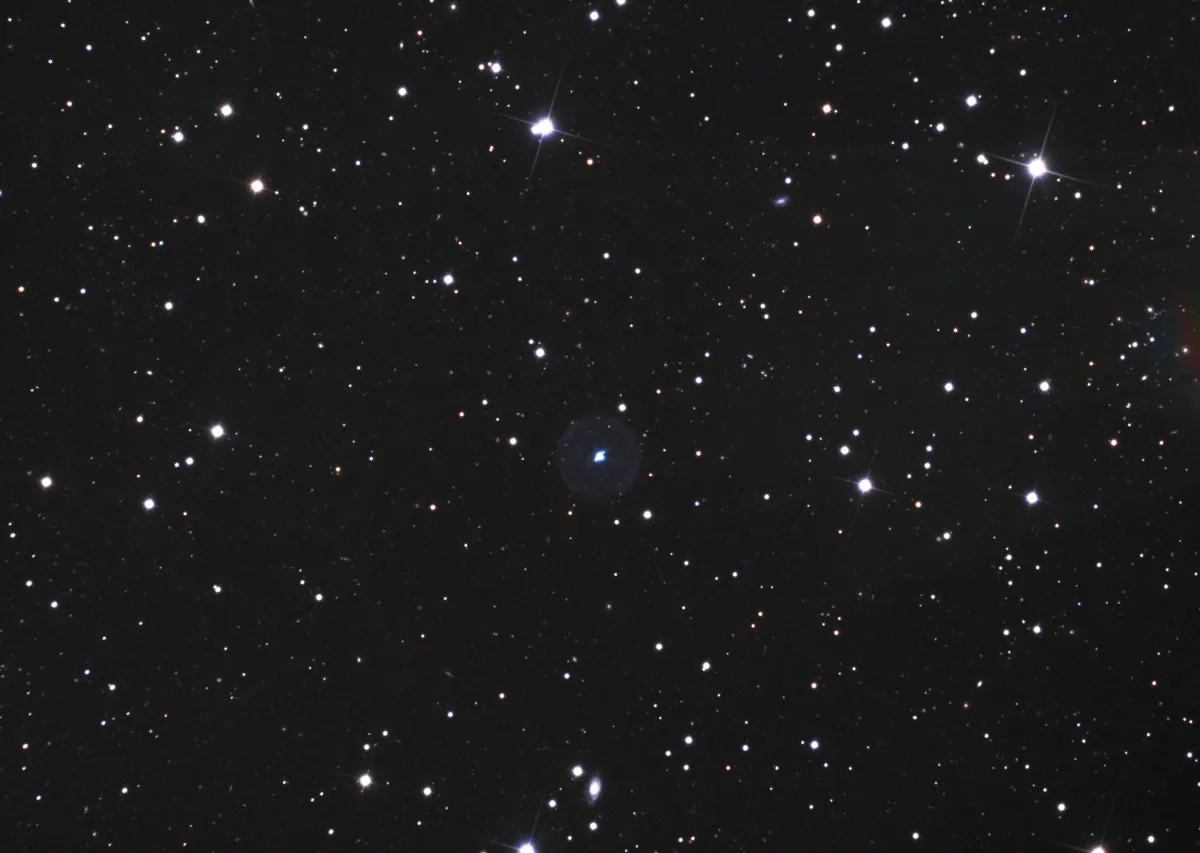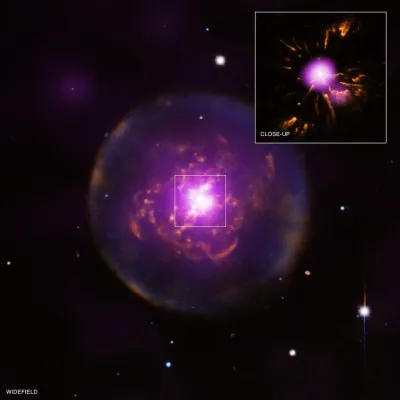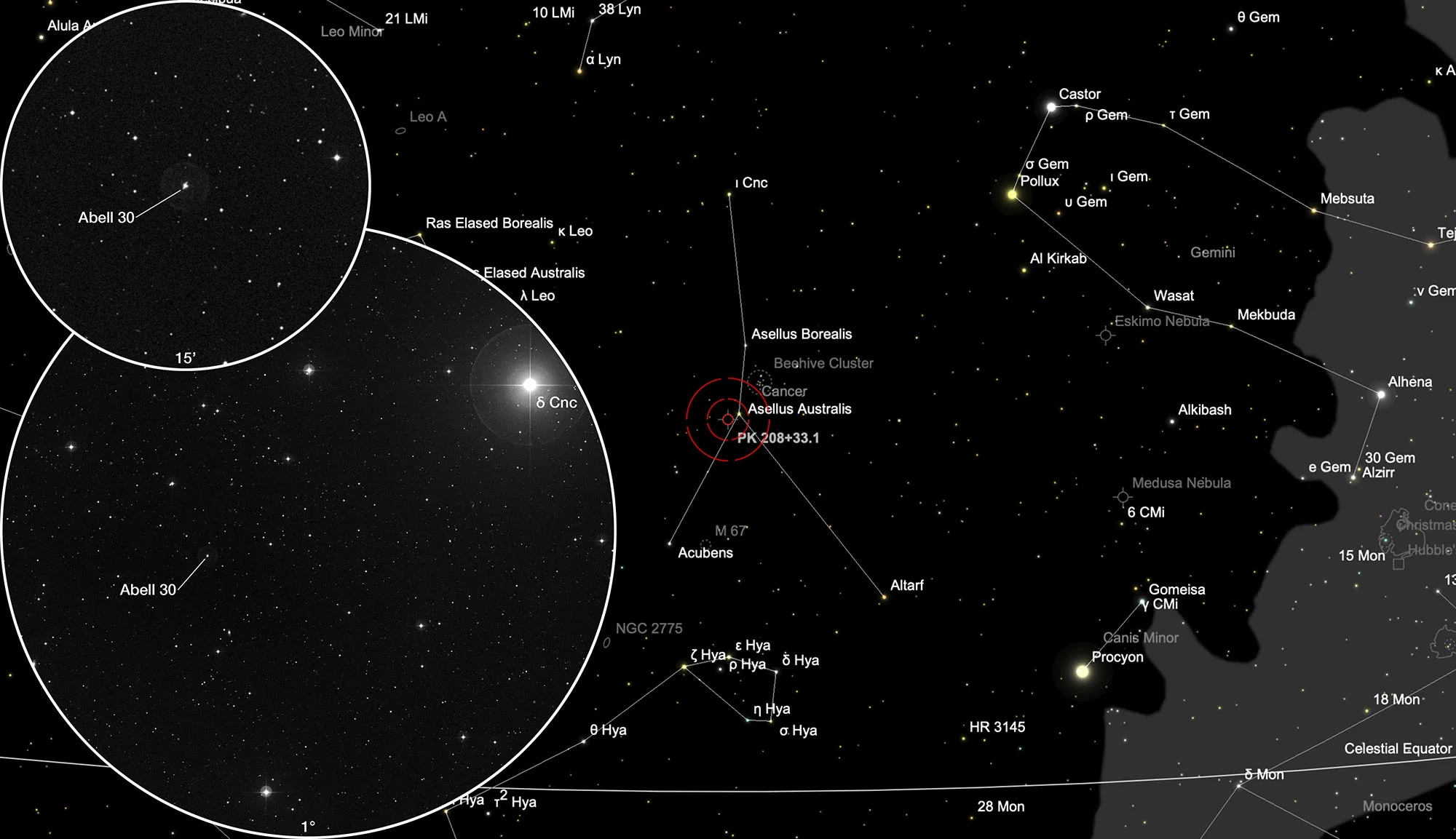Planetary Nebula Abell 30

History
The planetary nebula Abell 30 (PK 208+33.1) was discovered in 1964 by the American astronomer George Ogden Abell on the photo plates of the Palomar Observatory Sky Survey (POSS). In 1966 he published a list of a total of 86 planetary nebulae discovered on the POSS photo plates. [332]
Physical Properties

Abell 30 consists of a large spherical shell of low surface brightness with a diameter of about 120 arc seconds. Within about 10 arc seconds of the central star there are several bright clumps that contain very little hydrogen. These clumps could be explained by a rebirth scenario: After the central star became a white dwarf, it experienced a final thermal pulse. Most of the hydrogen in the star is built into the shell and burned into helium. [413] A variation in the light curve of the central star indicates a companion that circles it every 1.060±0.003 days. [414] The distance to Abell 30 is approximately 1702 pc. [145] It is estimated to be 12,500 years old. [415]
| Designations | PN G208.5+33.2: A 30, PK 208+33.1 |
| Right Ascension (J2000.0) | 08h 46m 54s |
| Declination (J2000.0) | +17° 52' 33" |
| Dimensions | 127." (optical) |
| Distance | 0.90 kpc |
| Expansion Velocity | 40.0 (O-III) km/s |
| C-Star Designations | AG82 107, CSI +18 -08440, UBV 8495 |
| C-Star Magnitude | U: 13.32, B: 14.32, V: 14.38 |
| C-Star Spectral Type | O VI, Of/WR(C)? |
| Discoverer | ABELL 1964 |
Finder Chart
The planetary nebula Abell 30 (PK 208+33.1) is located in the constellation Cancer, about 35 arc minutes in a southeast direction from the 4 mag bright star Asellus Australis (δ Cancri). On 30 January it is in opposition to the Sun and crosses the meridian at local midnight. The best observation season is October to July.
